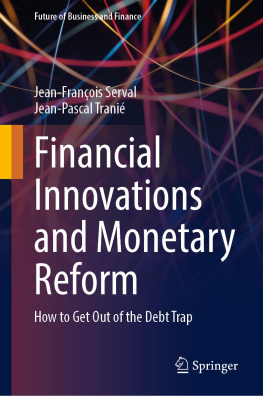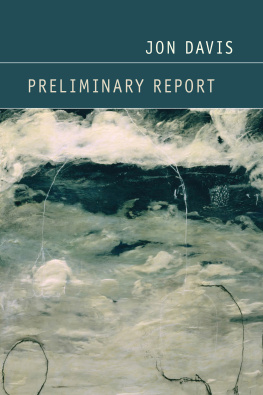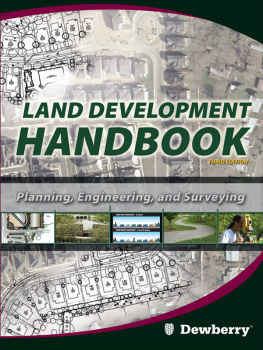PRELIMINARY FEASIBILITY FOR PUBLIC RESEARCH AND DEVELOPMENT PROJECTS
BY
DONGHUN YOON
Kyonggi University, South Korea
United Kingdom North America Japan India
Malaysia China
Emerald Publishing Limited
Howard House, Wagon Lane, Bingley BD16 1WA, UK
First edition 2021
Copyright 2021 by Emerald Publishing Limited
Reprints and permissions service
Contact:
No part of this book may be reproduced, stored in a retrieval system, transmitted in any form or by any means electronic, mechanical, photocopying, recording or otherwise without either the prior written permission of the publisher or a licence permitting restricted copying issued in the UK by The Copyright Licensing Agency and in the USA by The Copyright Clearance Center. Any opinions expressed in the chapters are those of the authors. Whilst Emerald makes every effort to ensure the quality and accuracy of its content, Emerald makes no representation implied or otherwise, as to the chapters' suitability and application and disclaims any warranties, express or implied, to their use.
British Library Cataloguing in Publication Data
A catalogue record for this book is available from the British Library
ISBN: 978-1-80117-267-7 (Print)
ISBN: 978-1-80117-266-0 (Online)
ISBN: 978-1-80117-268-4 (Epub)
CONTENTS
Abstract
The state conducts feasibility studies by adjusting the priority among policy projects in a reasonable manner for new R&D projects, in which large amounts of cost are invested in the budgeting process to allocate state funds with a limited budget. If the feasibility study examines the adequacy of project and the method of financing it, then the preliminary feasibility study verifies whether R&D projects are being pursued, focusing on the economic feasibility. R&D projects should be carried out at the stage of conception to review the economic feasibility and necessity to promote the sustainability of projects. For government-led public R&D projects, the feasibility should be reviewed in the prebudget phase, and the R&D preliminary feasibility study system performs its role as an evaluation system. The R&D preliminary feasibility study requires the establishment of fairness and the social credibility of plan, including the expert review, the information disclosure, and the alternative setting. In this study, we would like to present policy measures to ensure the sustainability of R&D projects by developing strategic action plans for R&D preliminary feasibility studies, thereby enhancing the effectiveness of R&D preliminary feasibility study.
1
Introduction R&D and R&D Budget
The R&D is a creative activity that obtains how the new knowledge of things applies using the knowledge already obtained. It can also be defined as creative efforts and exploration to acquire the new knowledge or to use the existing knowledge to find new ways. It is not easy to define the nature of activities as development or commercialization if they directly support private innovation activities. In an increasingly competitive economy, the R&D can be a source of competitive advantage (Lorca & Andrs, 2018). Although the strategic management of R&D portfolio is common practice in the private sector R&D, the government R&D management tends to be more discrete and ad hoc, focusing on generating maximum output from individual projects (Bozeman & Rogers, 2001). It is well known that the government R&D and the private R&D have a complementary relationship (Leyden & Link, 1991). Although larger firms are less efficient innovators, they spend more on the R&D investment and earn more from the R&D investment (Wu, Thomas, & Wright, 2020). In particular, the government R&D investment should review the commercialization of private sector in conjunction with the appropriateness of government support. The target of R&D budget application may be defined as the budget required for institutions whose main purpose is to carry out R&D activities, repair and establish facilities for the R&D, and the research. The government R&D budget can basically be defined as a budget that the government supports in promoting the new knowledge accumulation and technological innovation. The government R&D budget aims to supplement private R&D activities and develop technologies in basic, public, and welfare sectors, which are areas of the technology that may lead to prior development of future core technologies and market failures. From a financial perspective, the R&D budget is the budget required to support institutions whose main purpose is to carry out R&D activities and establish equipment and facilities for R&D. The government R&D budget is supported internally for the purpose of developing highly specialized technologies and fostering advanced manpower, so the asymmetry of information is relatively high compared to other budgets. Government R&D budgets are generally funded in the form of contributions, a type of government transfer expenditure that the government funds universities, research institutes, and private companies. Subsidies for R&D are an important tool of the public R&D policy, which motivates extensive scientific analyses and evaluations (Broekel, Brachert, Duschl, & Brenner, 2015). Contributions are a kind of subsidy that the government provide to the private sector based on statutes for those who carry out such projects when it is difficult for the government to directly carry them out or when it is deemed effective for the private sector to act on behalf of the private sector. It can be understood that contributions should have a clear legal basis, have no fixed use, and shall not be made in principle, and the balance of execution shall be attributed to the period of receipt of contributions. The public funding of R&D expenditure through subsidies have a positive impact on internal R&D and especially in the decision to conduct R&D internally and externally simultaneously (Afcha & Lpez, 2014).
2
Government R&D Project
Most literature on the impact of R&D on the economy has been on advanced countries, where the R&D expenditure as per cent of the GDP has been relatively high and stable for many years (Perrot, Mosaka, Nokaneng, & Sikhondze, 2013). The concept of a national R&D project is that the government sets specific directions and goals, strategically collects, and promotes R&D resources to solve science and technology problems in areas requiring R&D at the national level. Legally, it is defined as an R&D project in the science and technology in which the central administrative institute contributes all or part of its R&D expenses or is funded by public funds by specifying R&D tasks based on statutes. The national R&D projects consist of a number of research tasks or detailed projects. In general, technical development support projects, R&D training projects, and research-based construction projects are common within national R&D projects. Not all national R&D projects are subject to preliminary feasibility studies. Requirements of the national R&D project shall be the project promoted by the head of central administrative institute in accordance with the legal or statutory orders. The method of promotion is the R&D project unit, and the method of cost bearing is to provide all or part of R&D cost to the head of the central administrative institute or the public fund, and the scope of cost support is limited to the science and technology. National R&D projects subject to the preliminary feasibility study are limited to the science and technology among government projects related to the R&D, and the method of project implementation is stipulated to be supported by public funds in principle. National R&D projects are only applicable if they are clearly the government's role on the basis of statute. As a result, national R&D projects subject to preliminary feasibility studies are strictly required to have legal grounds for their implementation. The national R&D project is originally intended to allow other entities to perform the role of government on their behalf, so the project plan should be presented very specifically. It is stated in the law that R&D tasks should be specified. Tasks can include not only tasks for the research support but also tasks for introducing or building research equipment facilities, and these tasks can be specifically specified in various ways. The task refers to the entity whose activities are objectively specified by the entity acting on behalf of the government in the national R&D project. The R&D project success and value is often difficult to predict at the proposal stage. Evaluation methods and their effectiveness vary considerably and are influenced by specific organizational cultures and managerial skill sets (Thamhain, 2015). In the project planning and scheduling literature, this technological uncertainty has typically been ignored and project plans are developed only for scenarios in which the project succeeds (Reyck & Leus, 2008). The planning of national R&D project falls under the stage of policy planning and research evaluation that carries out the planning of national R&D goal setting and portfolio setting and the allocation of national resources. The national R&D project is an organically linked and detailed representation of activities aimed at common goals derived from the policy planning, rather than a set of detailed tasks or a bundle of budget standards. There are a variety of things to specify for national R&D projects, such as presenting technical goals and methods to reach them, specifically identifying requirements for achieving them, or presenting successful research and management methods. It is necessary to conduct the preliminary survey or the planning research on the technical and economic feasibility of the project in order to plan a faithful project with high possibility of success. The government can seek to strengthen the R&D by making it mandatory to plan new projects in advance. Objectives of the project, detailed implementation and implementation system for components for planning national R&D projects, adjustment plans for matters related to affairs of other central government agencies, evaluation plans for projects, measures to secure the size and manpower required, feasibility studies of government support, the utilization of expected effects and R&D results, domestic and overseas patent trends, technological trends and standardization trends are included. R&D project risks have become even more important given today's tight schedules and limited resources. Risk management has to be an integral part of the development process (Sharma & Chanda, 2017).











